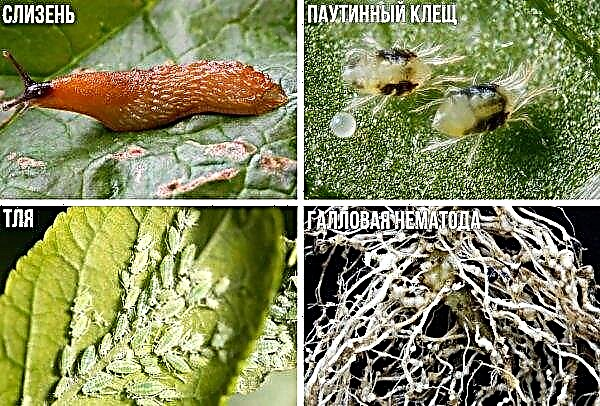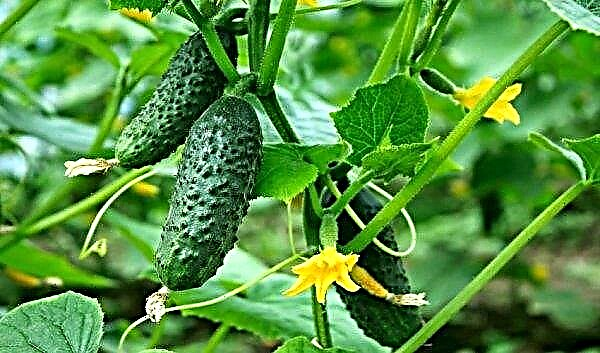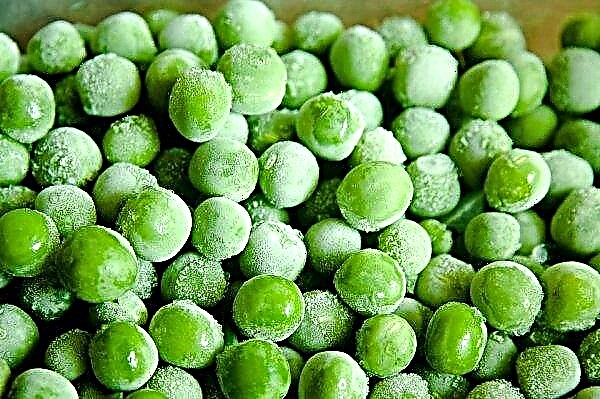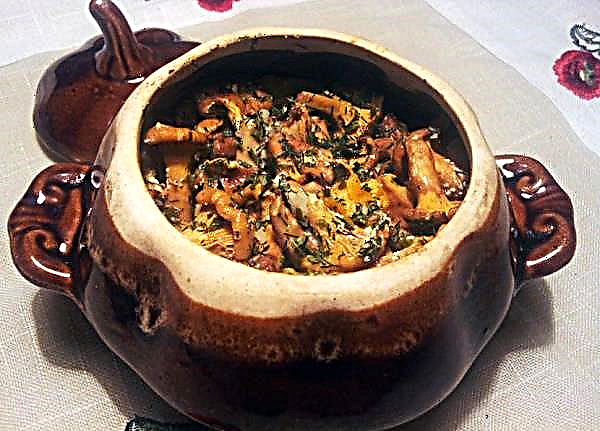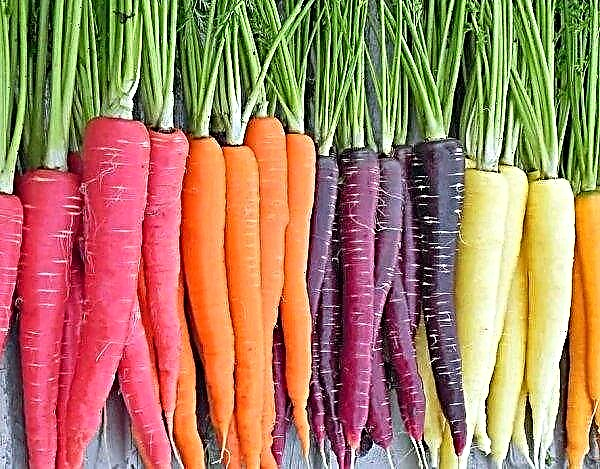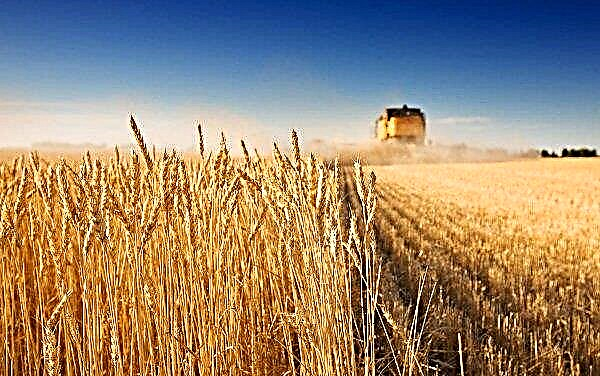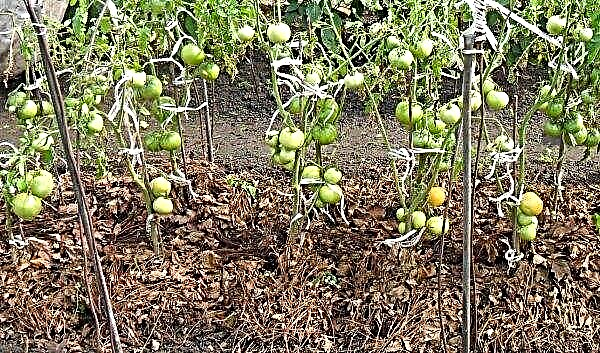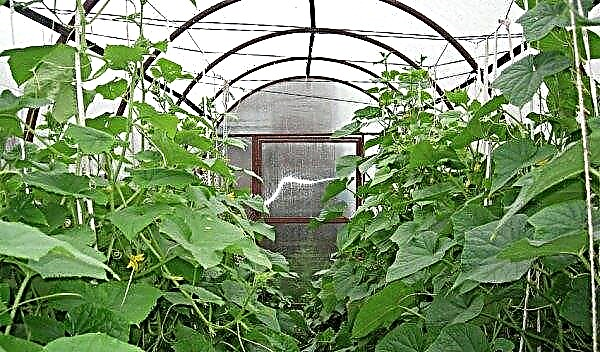The opportunity to get an early harvest of vegetables or fresh herbs is very attractive, regardless of the region in which you live. The modern market provides various models of affordable, comfortable greenhouses, as well as a full range of equipment that will make gardening a lot easier. About what equipment should be installed in the greenhouse, read further in the article.
What determines the choice of equipment for greenhouses
The greenhouse makes it possible to grow plants from around the world. But before you stock up on seeds, potted citrus fruits, orchids or other plants, you need to stop and think about what kind of growing environment you should provide for them.
You can’t fill the greenhouse with any plants you like. Some of them need a cool microclimate, while others like warmth. Some people like bright sunlight for 6–8 hours, while others require filtered, dim light. Under inappropriate conditions, the plants will begin to hurt after a while. Therefore, the task of the gardener is to select such plants that need the same conditions for development and ensure these conditions.
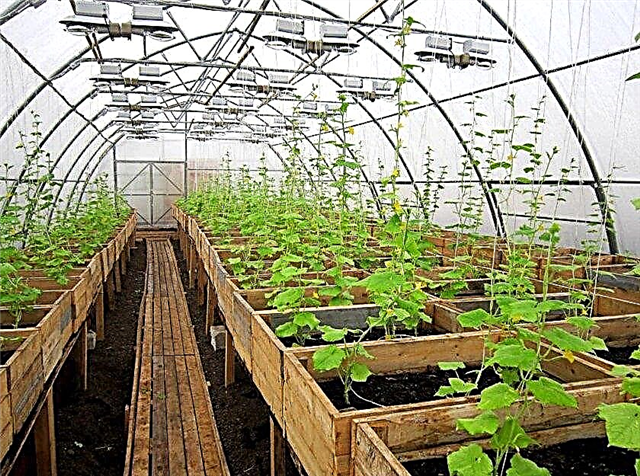 A properly planned structure will provide plants with normal growth conditions, and the gardener will be comfortable in it and take care of crops
A properly planned structure will provide plants with normal growth conditions, and the gardener will be comfortable in it and take care of crops
The temperature range for winter and summer must be determined during the year-round operation of the greenhouse. Winter temperatures ranging from + 4 ° С to + 16 ° С will be ideal for growing salad greens and herbs. Vegetables will need higher temperatures (up to + 22 ° C), and therefore the installation of a heating system. Summer +29 ... + 30 ° C in combination with the bright sun are suitable for tomatoes in a pot or geranium, but are unacceptable for violets and orchids. To provide cool, use equipment for cooling the air.
Did you know? The first description of the heated greenhouse was taken from Sang York, a treatise on agriculture compiled by the royal physician of the Joseon Dynasty in Korea in the 1450s. The treatise contains detailed instructions for building a greenhouse for growing vegetables, flowers, fruits using ondol, a traditional Korean floor heating system.
More light
Additional lighting is necessary if seedlings are grown in early spring or individual greenhouse plants are grown in autumn. Most crops require daylight hours of at least 8 hours. To solve this problem with a short daylight, lamps help.
The main types of lamps used in them:
- Incandescent lamps - The oldest type, known to everyone since childhood. They are as cheap as possible, but have a number of disadvantages. Their spectrum does not coincide with the solar due to the lack of a blue range of light. And this means that plants are deformed under this lighting. They also consume a lot of energy, heat up quickly and can damage polycarbonate if they are attached too close to it.
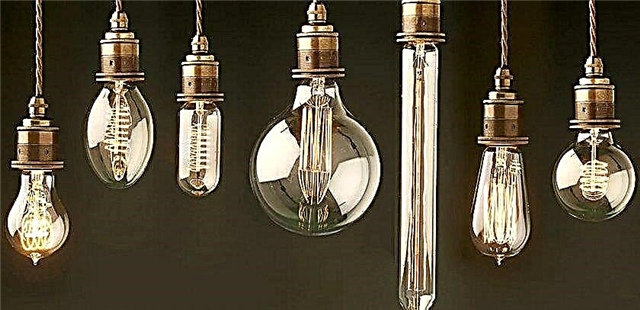
- Fluorescent lamps appeared as an alternative to the previous form. They are widely used now and are a budget option for lighting. Perfect for background lighting of plants. They are often used when growing flowers. But they can not organize the spotlighting of the site, for example, a rack with seedlings.

- Sodium lamps characterized by maximum light output and the same heat dissipation. And this saves on heating. They are as close to the solar spectrum as possible. But their main drawback is overheating. And it is quite dangerous for plants.
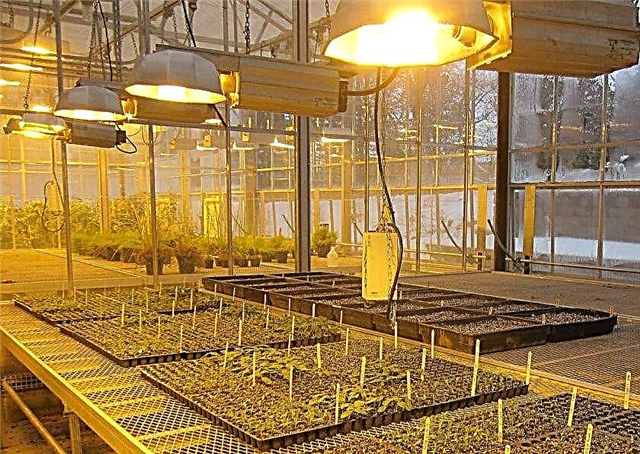
- Metal halide lamps well illuminate the room, have high light output and can last a very long time. But the cost of such lamps is quite high. In addition, they must be covered by a lamp, as they can explode.
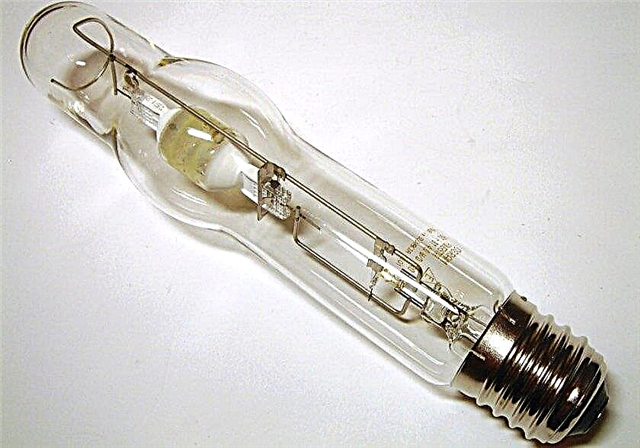
- LED or LED bulbs consume the least energy, and also allow you to adjust the intensity of lighting. Due to the fact that this type of lamp appeared relatively recently, farmers do not have one common opinion on the appropriateness of their use. And they have both supporters and opponents. The advantages of LEDs are the absence of overheating. They are not affected by humidity or temperature changes. They are safe to touch. Most often, this type of lamp is used for illumination when growing seedlings.
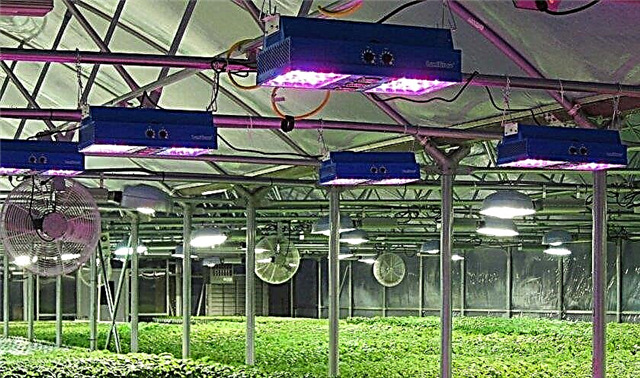
More heat
Heating is only necessary for those greenhouses that will be operated in winter. Usually these are large production facilities. It is not practical to heat a small greenhouse to satisfy personal needs.
The heating of the greenhouse is electric or gas. Electric is easier to install, cheaper and can be arranged both stationary and with portable heaters. He also has no combustion products that can affect plants: ethylene and carbon monoxide. Such heating is safer to operate.
Important! Greenhouses do not need constant sunlight all day. The presence of morning sunlight and shading during the day will be sufficient for growing greenhouse plants. If trees are located on the southwestern side, they will provide a natural cooling mechanism in the afternoon.
The gas is connected either to a central heating system, or is organized using gas cylinders. Using gas heating, they will necessarily organize good ventilation, which somewhat reduces its effectiveness. Therefore, the use of heating of this type is economically justified only for crops grown at low temperatures.
Heating equipment:
- Electric heaters - easy to use appliances. A variety of such equipment allows you to choose a model that is more suitable for power and price. Among the advantages of electric heaters are: no smoke, thermostatic control, the presence of a fan, which in summer can be used to improve air exchange without the heating function. Such a device distributes heat well and does not need to be charged.
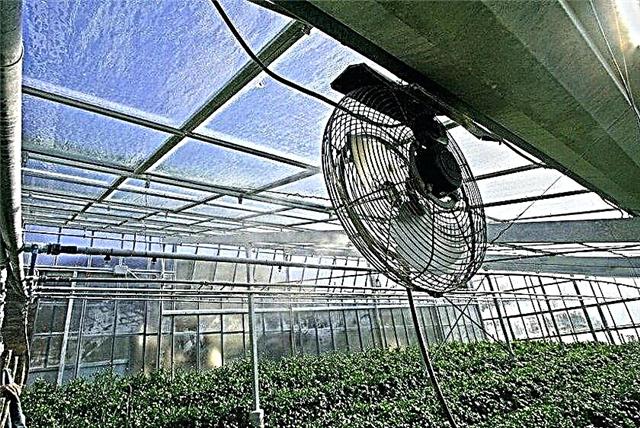
- Infrared heaters not very popular, but it is believed that they give better heating than electric heaters, distributing heat directly to plants. The principle of operation of the equipment is based on the fact that first the surfaces of objects are heated, which then give off heat to the room, creating the most uniform temperature gradient in the microclimate.
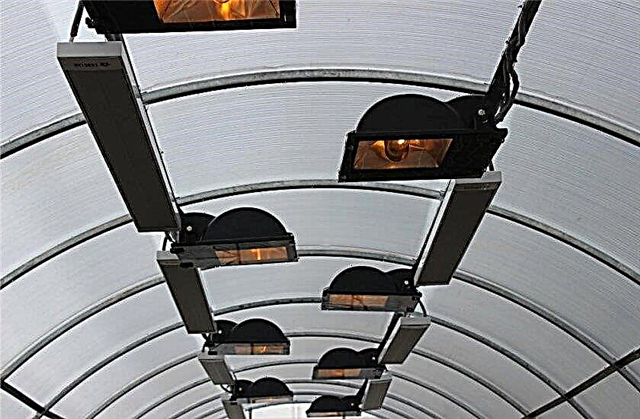
- Propane-based heating systems simple but not safe. They consist of a gas burner and a gas cylinder. Such a system can be used as needed, and it is relatively inexpensive.
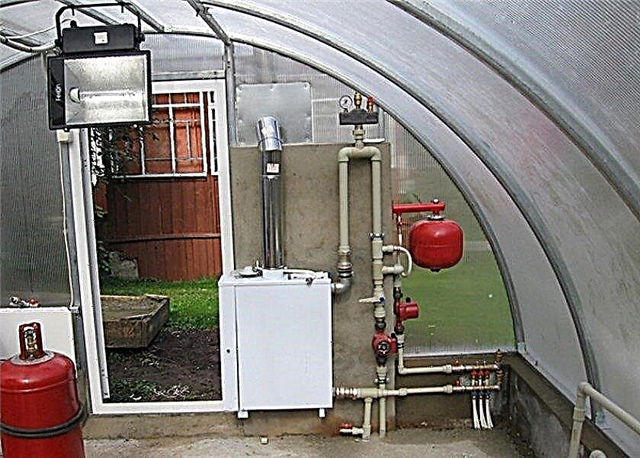
- Gas heatingconnected to a centralized system, create from the boiler and the main, along which the coolant moves.

- Air heating used in large farms. The system consists of air ducts, a heat source and fans that improve air exchange.
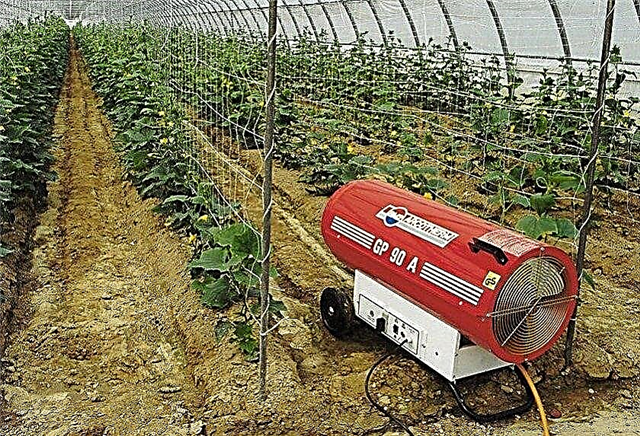
Together with the purchase of equipment, it is worth considering the issue of warming the greenhouse. The main heat losses occur through slots, vents and loose fit of doors or windows. Therefore, regularly check and update the seal on doors and other structural elements.
You can insulate the greenhouse by covering it from the inside with a layer of bubbly polyethylene. This will increase the heating efficiency. But at the same time you limit the access of sunlight to the inside. Therefore, when buying polycarbonate sheets to cover a structure, immediately find out how great its heat efficiency is.
Important! A double layer of polycarbonate can be installed on the north side of the greenhouse and this can increase the temperature inside, without an additional heating system.
More moisture
Watering is one of the most important activities in the plant care cycle. There are several irrigation systems:
- At subsoil irrigation tanks are installed in the ground into which water is collected. From the tanks, it goes into the ground through holes, feeding the roots of plants. You can even create such a system using plastic bottles. But in greenhouses such a method is rarely used.

- Drip irrigation organize from the pump, the highway along which water moves and droppers dispensers installed on it. Water is supplied slowly, absorbed gradually. It does not fall on the leaves and does not create conditions for the development of fungal infections. This is a convenient and economical way to supply water. Such a system can be adjusted manually, be automatic or semi-automatic.
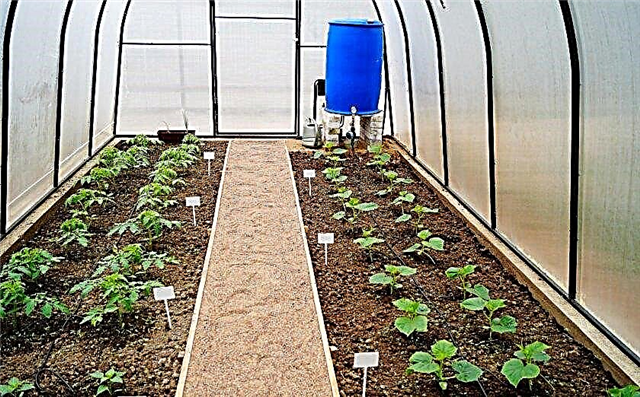
- Watering from a regular hose - This is the easiest and cheapest way. But it loses to other systems in efficiency and requires the obligatory presence of a person for watering plants.

For tropical plants, such as orchids, you may need to install a sprinkler system. It consists of a highway through which water is supplied and droppers. Often such a system is installed on the ceiling of the greenhouse.
How to install the equipment, phased installation
Before buying equipment, make a project and carry out a preliminary calculation of the parameters of the system. Designing for large industrial greenhouses is done by special companies. In designing the project, they take into account the wishes of the customer and offer him a choice of equipment options that can be involved in the scheme.
Did you know? The French called their first greenhouses greenhouses, as they were used to protect orange trees from winter frosts.
Preliminary drawing
If it is necessary to equip a small private greenhouse, the calculation is carried out by the farmer himself. Knowing the size of the room, its heat dissipation, the climatic conditions of the region and the particular crops that will be grown, you can calculate the amount of equipment required, its capacity and cost.
Design Sequence:
- The area of the greenhouse is measured, its length, width and height are specified.
- A plan for the placement of beds and the required equipment is being created.
- The zones of influence of the systems are noted: the radius of the droppers during irrigation, the heating sector for heating appliances, etc.
- The power of the equipment is calculated.
- Suitable options are selected.

Tools and accessories
In addition to equipment for heating, lighting, ventilation and irrigation, you will also need to purchase garden equipment. If you plan to grow seedlings, then racks for its installation.
The list of equipment that may be needed:
- shelving;
- partitions for zoning the space when growing plants with different climate requirements;
- garden table;
- shelves for organizing quarantine;
- material for shading plants;
- garden hoes, shovels, pruner for pruning plants;
- sprayer;
- fertilizer breeding tanks.
Did you know? Greenhouses in hot, dry climates are used specifically to provide shade, so they are sometimes called “shadow houses”.
Tillage and formation of beds
Inside the small greenhouse, 2 beds are required to make a passage between them. For larger constructions, the beds do more. The width of one is 40-60 cm, the width of the passage between them is 50 cm.
The internal content of the garden depends on the type of soil that is needed for future plants. It can be organic fertilizer - humus, compost. It is mixed with the ground or laid in layers. Layers are usually needed if the roots should not be in direct contact with fertilizers. These can be root crops, plants with a rooted root system. The height of the beds depends on the size of the rhizomes. So, strawberries, radishes, onions have small roots, so the bed for them should not be high.
Video: Location of beds in the greenhouse
The beds themselves can be with sides made of wood or aluminum sheet. This is neat and eliminates the slipping of soil onto the track. Paths can be made of any materials: boards, tiles, pebbles, concrete. The main thing is that the materials are not slippery.
Tips for beginner gardeners
The greenhouse is equipped according to the following plan:
- Start by exploring the conditions that crops need. This will help determine if lighting and heating will be needed.
- Then determine the irrigation system for the greenhouse.
- Plan the location of the required equipment.
- Now determine the size of the beds and paths. They need to be equipped already after the engineering systems for greenhouses are installed: the water supply system and others. But here you need to calculate where they will be located in advance.
- Then you need to move on to placing additional inventory: shelving, shelves and other items.

Before considering the purchase of expensive equipment, find out if there is an opportunity to solve the problem in simpler ways. For example, for ventilation, you can simply open the window, or you can install a special mechanism that will automatically open it. Unfortunately, any additional equipment will affect the final cost of production. And this must be taken into account.
The arrangement of the greenhouse is no less important stage than its construction. Indeed, the correct organization of space and microclimate has a significant impact on plant productivity.














